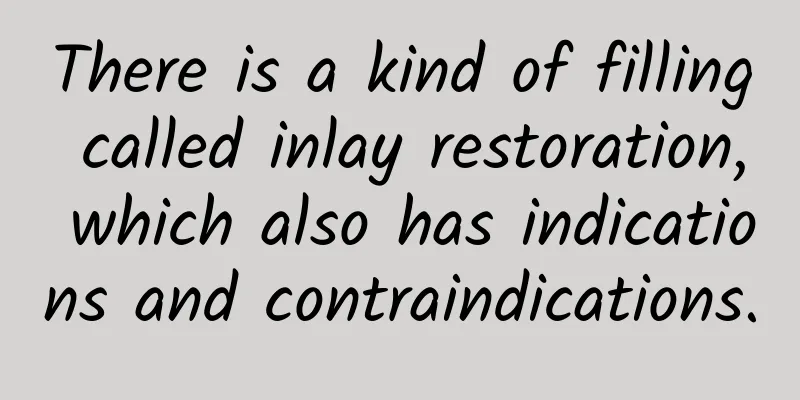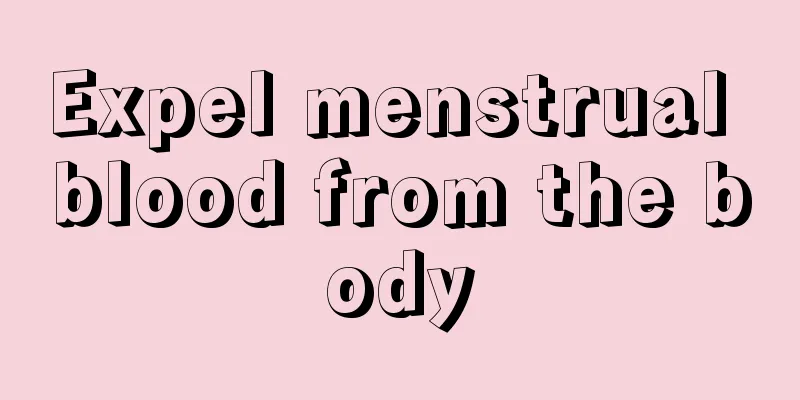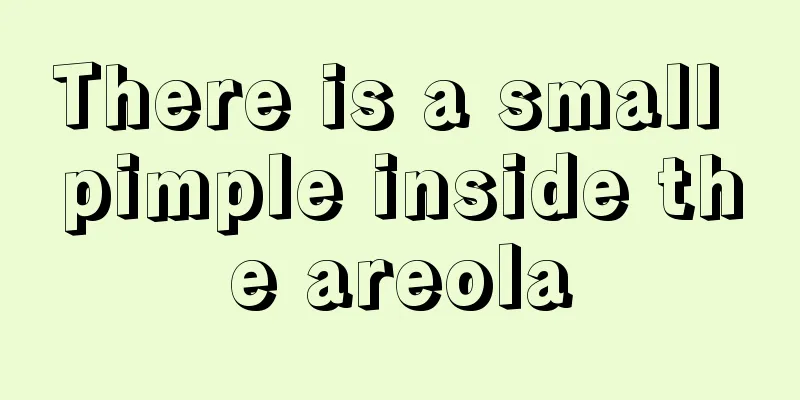There is a kind of filling called inlay restoration, which also has indications and contraindications.

|
In life, many patients who have had their teeth filled may find that: It’s only been a short time since I filled the tooth, how come the material fell off? It’s only been more than 2 months since the filling, how come food is stuck under the filling material? After only half a year of use, it's decayed again... I'm so tired. Is this dentist's skill too poor? In the above situation, you would choose the traditional method of filling teeth, right? 01. Traditional method of filling teeth? The traditional method of filling a tooth is to grind off the carious part, fill it with material, and finally polish it. During the process, the patient's saliva, gingival bleeding, and mouth opening degree of cooperation affect the doctor's diagnosis and the size of the operating space. In addition, the polymerization shrinkage of the resin material itself and the weak bonding force with the cementum and dentin, as well as the difficulty in cleaning some corners such as the gaps between teeth, the neck of the tooth, and the distal tooth surface, etc. In some other cases, the tooth decay is deep and large, and the material cannot obtain good retention and resistance, which will ultimately make the life of the filled tooth not very long, and most of them may cause material shedding and secondary caries. Dentists say that traditional filling methods are not durable for large-area caries or caries in special locations. Another filling method can be chosen - inlay. With the rapid development of oral medicine, inlays are rapidly being understood and recognized by more and more people for their advantages such as less removal of tooth tissue, good mechanical properties, good edge adhesion, and high polishability . 02. Advantages of inlays over traditional fillings The difference: After taking an intraoral impression, the inlay is designed and made by a specialized dental technician outside the mouth using digital technology or on a plaster model based on the occlusal relationship of the entire mouth and the characteristics of the affected teeth. The clinician then wears it into the patient's mouth for trimming and uses a specially formulated adhesive to bond it to complete the restoration. #1. Compared with full crowns, less tooth preparation is required, which reduces stimulation to the pulp and can restore the ideal tooth shape ; #2. The edges of the inlays are mostly located in the supragingival self-cleaning area, and the edges can be highly polished, so that plaque is not easily attached and it is easy to clean, which can prevent caries and benefit the "long-term stability" of periodontal tissues ; #3. For defects caused by proximal caries, inlays can accurately restore the position, size, and tightness of the proximal contact points , increase the compatibility between teeth and restorations, reduce or even solve food impaction, and help prevent caries; #4. Since the inlay is designed outside the mouth, the technician will fully consider the matching degree between the edge of the restoration and the affected tooth when designing, to ensure the edge closure of the restoration and further prevent the tooth from further decay; #5. Inlays can cover the cusps of teeth, which can protect the thin walls and weak cusps of teeth, increase the force-bearing area of the teeth on the restorations, prevent stress concentration, and prevent tooth fracture ; #6. Compared with the single color selection of filling materials, the color of the inlay can further fit the gradient of the original tooth , which has a better aesthetic effect; #7. Inlay is a repair method that directly bonds the defective part as a whole to the mouth. Its bonding area and force-bearing area are larger than those of simple filling treatment, and its resistance shape and retention shape are better, so it is not easy to fall off . Even if it falls off accidentally, as long as the tooth is not further decayed or damaged, it can be reattached with adhesives. This is something that traditional fillings cannot match. Although inlay fillings have many advantages, they also have certain indications and contraindications. 03. Indications for inlay fillings #1. Generally speaking, the restoration of tooth defects caused by caries in any part of the tooth is an indication for inlays; #2. The tooth defect is large and it is difficult for general filling materials to obtain good retention; #3. Tooth defects of posterior teeth due to excessive combined force; #4, tooth defects on the cusps, incisal angles, marginal ridges and occlusal surfaces of posterior teeth; #5. Poor proximal contact or severe food impaction caused by posterior tooth defects requires restoration of the interproximal contact area; #6. Teeth that need to restore crown height and shape; #7. Protective restoration of the support part of removable partial dentures; #8. The tooth defect is below the gum line, and it is difficult to obtain good marginal properties with general filling materials; 04. Contraindications of inlay fillings #1. Permanent teeth of adolescents and deciduous teeth of children that have not been treated with root canal are not suitable for inlay restoration because of the high position of the pulp horn, which is easy to damage the pulp; #2. The occlusal defect is small and shallow, so as to avoid cutting too much healthy tooth tissue; #3. The tooth defect is too large and the remaining tooth tissue cannot provide sufficient resistance and retention for inlay restoration. #4. Large areas of tooth defects result in less enamel available for bonding, making it impossible to obtain sufficient bonding strength; #5. People with abnormal occlusal function, such as bruxism, clenching teeth, etc., may cause excessive wear and easy fall of the inlay; #6, defects on the proximal and labial surfaces of the anterior teeth that do not involve the incisal angle; #7: The tooth defect on the axial surface is deep and reaches the subgingival; #8. Patients who have high requirements for aesthetics and long-term restoration effects should not undergo inlay restoration; Note: The pictures in this article are from the website, and some of the text is excerpted from the Internet. The copyright belongs to the original author. If there is any infringement, please contact us and we will delete it. |
<<: Investing Analytics: Twitter activity survey shows that Apple is still more popular than Samsung
Recommend
Brown blood from vagina not like menstruation
Some women have brown discharge, which looks like...
How to unclog blocked breast ducts?
For new mothers, improper breastfeeding methods o...
How often should newborn diapers be changed? What are the signs that a baby is not wet when changing diapers?
Many mothers find that their babies use too much ...
What is the reason for heavy menstrual flow and long duration?
The most important thing for every girl in a mont...
When is the time for ultrasound examination during pregnancy?
During the ten months of pregnancy, women should ...
Does meniscus injury require surgical treatment?
This is the 4216th article of Da Yi Xiao Hu Last ...
Why does homemade yogurt produce water? (When it is watery and thin, it will easily produce water)
...
How can diabetic patients exercise properly?
How do diabetic patients exercise “reasonably”? E...
Pregnant women have labor pains every ten minutes
Many women have to experience pain before giving ...
Bleeding after sex with husband
Normal couples should have appropriate sexual int...
What causes pain in the lower left side of the abdomen in women?
Many women experience pain in the lower left side...
What is the reason why women experience lower abdominal pain after drinking?
Nowadays, not only men drink alcohol, but many wo...
How to deal with miscarriage
You have just had an abortion and your uterus is ...
How long does it take for menstruation to be considered pregnant?
Women have their menstrual period once a month, w...









